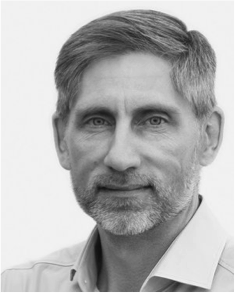
A creative professional’s progression of financial success
By Blair Enns, CEO, Win Without Pitching
In a recent episode of the 2Bobs podcast that I co-host with David C. Baker on the art of creative entrepreneurship, David and I try to unpack the word “success” and get to the root of the objective, measurable form of success and the entirely subjective idea of feeling successful. We agree that financial success is the easiest way that we objectively measure the success of others, but also that it has an undersized and fickle impact on how successful it makes us feel. I find the topic of success so complex that the episode is either the best or the worst we’ve ever recorded. Maybe you can decide.
 Regardless, it’s only coincidental that today I’m writing about financial success. We all want financial success of some level. What we consider to be successful and how bad we want it do differ from person to person, of course.
Regardless, it’s only coincidental that today I’m writing about financial success. We all want financial success of some level. What we consider to be successful and how bad we want it do differ from person to person, of course.
I know that in my own journey to understand value-based pricing I have seen three obvious levels of financial success that hadn’t previously been so clearly demarcated to me. Moving from selling hours, days or sprints to pricing based on value is not just a tactical shift, it’s a shift that does not happen without a profound transformational shift in one’s own mindset, and that is something I want to explore here. But let’s begin with the first level of financial success. It may be one that you’re still striving to reach, or perhaps you’ve wisely decided to skip right past it.
Level One: The Efficient Firm
In the beginning, most creative firms pursue efficiencies. They see time as the resource they have available to sell and so they strive to sell as many of the available person-hours as possible, thereby maximizing their billable efficiency. There are industry benchmarks that agencies strive to hit and whenever principals get together they often ask each other about utilisation rates, to get a sense of how they’re measuring up on the efficiency front. If time is indeed the resource that the firm sells, then it stands that success will be had by selling as much of the firm’s inventory as possible. I’ve encountered some highly efficient firms in my time serving the creative professions and their owners tend to do well financially.
The challenge with this first level of success is the longer you stay at it or even just pursue it, the harder it is to move to the next level. The pursuit of efficiencies, as I wrote in my book Pricing Creativity: A Guide to Profit Beyond the Billable Hour, creates a corporate culture with an inward focus on the reduction of messiness and the elimination of waste. On the surface that might not seem so bad, but as we will see shortly, an inward focus on the firm being efficient is directly at odds with the messiness and waste required to innovate and create extraordinary value for the client. This extraordinary value is the basis for your own extraordinary profits that can be achieved at the next two levels.
Level Two: The Value-Curious Firm
 I’ve carefully chosen the term “value-curious” to describe those who dabble with value-based pricing. I expect the majority of the readers of my book to reach, and (if I’m fully honest) stay at this level where they put together options and prices that are based on their own assessments of the value they might create for the client.
I’ve carefully chosen the term “value-curious” to describe those who dabble with value-based pricing. I expect the majority of the readers of my book to reach, and (if I’m fully honest) stay at this level where they put together options and prices that are based on their own assessments of the value they might create for the client.
Those at this level begin to transcend efficiencies and the selling of time as they recognize the opportunity to charge more when the value to be created is higher. I’m getting emails every week from people new to this category, many of whom are discovering just how significantly they have been undercharging by having clients immediately accept their new anchor prices, some of which are multiples of what they would have previously charged.
These value-curious are the ones who can push past the $250k in gross income per full-time equivalent employee (AGI/FTE) barrier that seems to limit even the most efficient firms and generate per capita profits that are not within reach of their efficiency-focus peers.
And yet, from this second level a third and far more lucrative level is accessible. Few get there but those that do generate profits that many don’t think are possible in a creative firm.
Level Three: The Entrepreneur

The entrepreneur is someone who has gone through the mindset shift I mentioned earlier. They see things differently.
I tell a story in Pricing Creativity of an independent consultant friend of mine who was about to give away free advice in an email. At the last minute he changed the last line from “Good luck and let me know how it works out,” to “My fee is $600,000.”
If you’ve read the book you know the story and how it ends. But, as it turns out, the end that I described was the beginning of my friend’s story of personal transformation. A few weeks after my book launched, he sent me a note.
“Your book reminded me that it all began with that email where I changed the last line from “free, to, big fee” at the last minute. There are times in your life when you can point to one decision that can fundamentally change your life. It’s looking like that pricing decision was one for me.“
In a lengthy email, my friend, who I’ll call Luke (not his real name) went on to describe many business deals he is involved in that have six-, seven- and eight-figure payoffs, either completed or pending with a high likelihood of completion. Luke owns pieces of other businesses, is getting paid based on gross sales of others and has helped to build and is now trying to sell a company for which he will be paid a percentage of a sale price that might hit nine figures.
I call these business deals, but before my friend’s aha moment, when he changed the last line of an email, they all looked like engagements. A client had a problem and asked him to help. He would do what he had done for the previous decade: put together a consulting engagement where he sold the client time — days onsite and ongoing access — to help them achieve their goals.
Now, instead of thinking like a consultant he thinks like an entrepreneur. That is the fundamental shift in mindset I mentioned earlier. Where your entire focus moves from selling something to creating something.
Luke looks for ways to help create enormous value and then he proposes to get paid on that value. He no longer thinks about what he will sell, only about how much value he can help create and what that would be worth. As a result, none of his deals/engagements look anything like the other.
It’s not likely that you can say the same thing about your business. In fact, so many creative firms tend to deliver solutions so similar from client to client that they start to go the other way and productize their services. For most firms, this is a big mistake. The greater opportunity for financial success is in the other direction – viewing each new client as a blank slate of opportunity to create extraordinary value and to earn extraordinary profits.
You might think my friend has an advantage over you that allows him to do something you cannot. “He’s a consultant — this comes naturally to him,” you’re thinking. When I first met Luke he was an art director at a small ad agency in a small market, fresh from art school. I’ve met enough other designers who have made this transformation to know that there is nothing about the creative professions that precludes someone from being paid the way, and the amounts, Luke gets paid.
If financial success alone does not drive you, here’s another quote where he describes what it was like to work on his first value-priced engagement.
“Man was it fun! Most fun project I had ever worked on. Hell it was definitely not work. Just fun.”
Welcome to the next level, one that can only go by the name of true entrepreneurship. A level where the focus is on value creation, where you willingly take on risk and you agree to try to do things that you’re not even sure that you can do. A place where every engagement is different from the previous and a feeling of fun pervade the work.
A Final Caveat
These three levels of success are clear to me, and each level makes what passes for financial success at the previous level look paltry, but that does not mean that all creative entrepreneurs have some sort of obligation to progress on this path from one level to the next. The higher levels come with higher risks; the propensity for risk is not universal. Some people are just wired for efficiencies and are uncomfortable with the freeform approach of the entrepreneur. That’s okay. A good living can be made — with little risk — by running an efficient firm. For many of you, that may be enough.
Image credits:
George Kedenburg III on Unsplash
Daniel Hansen on Unsplash
ShareGrid on Unsplash
Mike Kotsch on Unsplash

 Regardless, it’s only coincidental that today I’m writing about financial success. We all want financial success of some level. What we consider to be successful and how bad we want it do differ from person to person, of course.
Regardless, it’s only coincidental that today I’m writing about financial success. We all want financial success of some level. What we consider to be successful and how bad we want it do differ from person to person, of course. I’ve carefully chosen the term “value-curious” to describe those who dabble with value-based pricing. I expect the majority of the readers of my book to reach, and (if I’m fully honest) stay at this level where they put together options and prices that are based on their own assessments of the value they might create for the client.
I’ve carefully chosen the term “value-curious” to describe those who dabble with value-based pricing. I expect the majority of the readers of my book to reach, and (if I’m fully honest) stay at this level where they put together options and prices that are based on their own assessments of the value they might create for the client.
